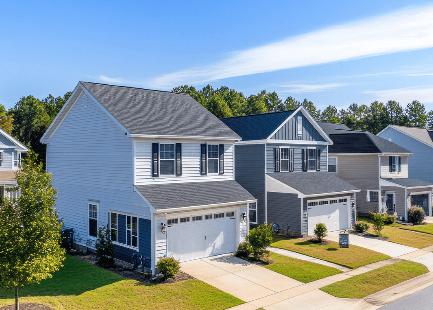High-cost real estate markets offer incredible opportunities—but they also come with unique challenges. Investors operating in areas like Alabama, California, and Florida must be strategic not only in their property selection and renovation plans but also in how they finance their deals. In these markets, fix and flip loans are often the best option to keep projects moving quickly and protect margins.
In this guide, we’ll dive deep into what investors need to know about using fix and flip loans effectively in high-cost regions, how to overcome potential obstacles, and the smart strategies that separate profitable flips from risky ventures.
Understanding High-Cost Real Estate Markets
High-cost markets are areas where median home prices are significantly above the national average. Think of places like San Francisco or San Diego in California, Miami in Florida, and emerging luxury pockets in Alabama.
While the profit potential on flips is higher due to elevated home values, so are the upfront investments, renovation costs, competition, and overall risks.
Key characteristics of high-cost markets include:
- Higher property acquisition costs
- More demanding buyers expecting luxury-grade renovations
- Longer permitting and inspection processes
- Higher holding and transaction costs
This environment requires careful planning—and that’s where smart financing, like fix and flip loans, becomes crucial.
Why Fix and Flip Loans Are Essential in High-Cost Markets
Fix and flip loans are short-term, asset-based loans specifically designed for investors buying properties that need renovations before resale. Here’s why they are a perfect match for high-cost areas:
- Speed: You can close quickly on competitive deals.
- Flexible Funding: Renovation budgets can be incorporated into the loan.
- Asset-Based: Approval is based more on the project than the borrower’s credit profile.
- Short-Term Structure: Designed for properties you intend to sell within 6 to 18 months.
In cities like Miami, Los Angeles, and parts of Birmingham, having fast, flexible access to capital can be the difference between winning and losing a deal.
Common Challenges When Flipping in High-Cost Markets
1. Higher Loan Amounts and Increased Risk
Larger loan sizes mean larger monthly interest payments. While fix and flip loans typically offer interest-only options, those payments can still strain cash flow, especially if a project faces delays.
An investor flipping a $300,000 property in Alabama faces very different financial pressures than one flipping a $1.2 million home in California.
2. Luxury-Grade Renovations
In markets like Florida or California, buyers expect luxury finishes—think quartz countertops, custom cabinetry, premium flooring, and designer lighting. Cutting corners can lead to prolonged days on the market or lowball offers.
Your renovation budget, funded by fix and flip loans, must reflect the quality standards of the market to achieve top resale prices.
3. Strict Regulations and Longer Timelines
High-cost cities often have stricter building codes, more inspections, and longer permitting processes. Delays can quickly eat into your profits if your loan clock is ticking.
Navigating these complexities requires detailed planning, reliable contractors, and lenders who understand how fix and flip loans should be structured to accommodate potential holdups.
Smart Strategies for Using Fix and Flip Loans in High-Cost Markets
1. Know Your Numbers—Exactly
Before you even submit an offer, you should have detailed projections:
- Accurate ARV (After-Repair Value) based on local comps
- Itemized renovation budgets are broken down by room and task
- Permitting timelines and costs
- Realistic sales projections based on local inventory turnover rates
Working with fix and flip loans means you’ll need to manage your renovation draws carefully and ensure your cash flow plan supports your projected exit.
2. Choose the Right Properties
Not every property is worth flipping in high-end areas. Look for homes that:
- Are cosmetically outdated but structurally sound
- Are in locations with consistent buyer demand
- Have no major permitting red flags or zoning issues
In Florida, for instance, older coastal properties needing hurricane-proof updates can be lucrative if you plan renovations correctly with your fix and flip loans.
3. Partner with Experienced Contractors
In high-cost markets, working with licensed, insured, and experienced contractors is a must. A trusted team helps ensure:
- Quality workmanship to meet buyer expectations
- Timely completion to avoid loan extensions
- Compliance with local regulations
Many lenders providing fix and flip loans also look favorably on investors who work with reputable construction teams, helping speed up loan approval.
4. Plan for Market Shifts
Real estate markets can change quickly. Interest rate hikes, economic downturns, or supply chain issues can affect both your renovation timeline and your selling price.
Always have backup plans, including:
- Renting the property short-term if resale is delayed
- Refinancing into a rental loan if the market softens
- Allocating an emergency fund to cover unexpected holding costs
Smart investors in Alabama, California, and Florida always structure their fix and flip loans with some flexibility in mind.
Fix and Flip Loans: Key Features to Look For
Not all fix and flip loans are created equal. Look for a lender offering:
- Fast approval and closing times
- Flexible renovation draw schedules
- Competitive rates and low fees
- Local market knowledge (especially important in complex states like California and Florida)
- No prepayment penalties if you finish early
Finding a lender who understands your market and your project strategy is just as important as finding the right property.
Location-Specific Tips
Flipping in Alabama
- Focus on emerging suburban neighborhoods around Birmingham and Huntsville.
- Stay conservative on ARV estimates—buyers prioritize affordability.
Flipping in California
- Build in extra buffer time for permits and inspections, especially in cities like Los Angeles and San Francisco.
- Luxury buyers expect premium finishes—skimping will hurt resale value.
Flipping in Florida
- Watch out for flood zones and mandatory hurricane-code renovations.
- Leverage seasonal trends: spring and early summer listings sell faster.
Understanding these local nuances will help you structure your fix and flip loans and projects for maximum success.
Risks to Watch Out For
Even with the best planning, flips can go wrong. Key risks include:
- Underestimating renovation costs
- Overestimating resale prices
- Delays in permitting or construction
- Slow-moving inventory causing longer holding periods
- Unplanned changes in loan terms
Protect yourself by securing financing with a lender that offers transparent terms and supports your goals throughout the project.
Partner With a Lender Who Understands High-Cost Markets
At Insula Capital Group, we know that flipping in high-cost markets like Alabama, California, and Florida isn’t for the faint of heart. That’s why we structure our fix and flip loans to give you the flexibility, speed, and confidence you need to succeed.
We work closely with real estate investors to offer fast approvals, flexible draw schedules, and competitive terms—so you can focus on what matters: delivering beautiful homes and maximizing your profits.
Whether you’re tackling your first high-end flip or expanding your portfolio, we’re here to help you every step of the way.




